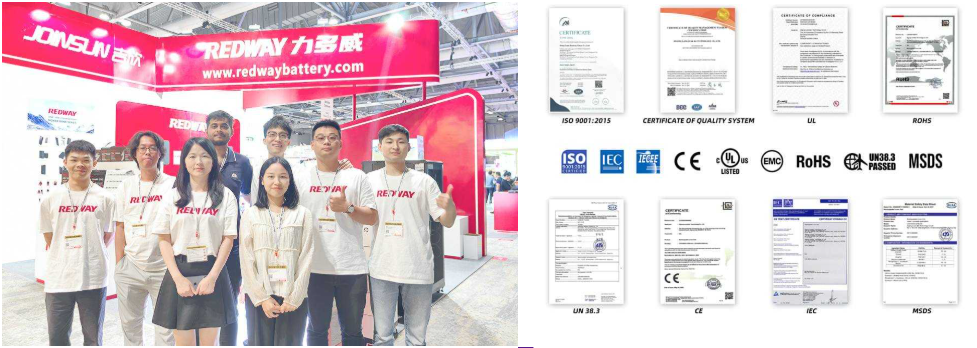How Are LiFePO4 Batteries Manufactured?
LiFePO4 batteries, known for their safety and longevity, are produced through a meticulous manufacturing process involving several key steps. This process ensures that each battery meets high standards of quality and performance, making them suitable for various applications, including electric vehicles and renewable energy storage.
What is the production process of LiFePO4 batteries?
The production process of LiFePO4 batteries involves several stages, including raw material preparation, electrode fabrication, electrolyte mixing, cell assembly, and final testing. Each step is crucial to ensure the performance, safety, and reliability of the batteries, with strict quality control measures implemented throughout the process.
Chart: Overview of LiFePO4 Battery Production Stages
| Stage | Description |
|---|---|
| Material Preparation | Sourcing and preparing raw materials |
| Electrode Fabrication | Creating positive and negative electrodes |
| Electrolyte Mixing | Preparing the electrolyte solution |
| Battery Assembly | Assembling cells with electrodes and separators |
| Testing | Evaluating performance through charge/discharge tests |
| Packaging | Finalizing product for distribution |
How is cathode material prepared for LiFePO4 batteries?
Cathode material for LiFePO4 batteries is prepared by mixing lithium sources, iron salts, and phosphates in a solvent. The mixture is heated to form lithium iron phosphate crystals, followed by drying and calcination at high temperatures. This process ensures the desired particle size and electrochemical properties for optimal battery performance.
Chart: Cathode Material Preparation Steps
| Step | Description |
|---|---|
| Material Mixing | Combine lithium iron phosphate with additives |
| Grinding | Achieve uniform particle size |
| Coating | Apply mixture onto aluminum foil |
What steps are involved in negative electrode fabrication?
Negative electrode fabrication involves several steps: first, graphite particles are processed into a fine powder and mixed with a binder like polyvinylidene fluoride (PVDF). The mixture is then coated onto a current collector, pressed to achieve the desired thickness, and cut into appropriate sizes for assembly into battery cells.
How is the electrolyte mixed for optimal performance?
The electrolyte is mixed by combining lithium salts with organic solvents like ethylene carbonate and dimethyl carbonate. Proper mixing ensures complete dissolution of the salts, creating a homogeneous solution that facilitates lithium ion movement between electrodes. This mixture is critical for enhancing battery efficiency and overall performance.
What does the battery assembly process entail?
The battery assembly process includes stacking or winding the electrodes with separators, injecting the electrolyte into the cell, and sealing it to prevent leakage. After assembly, cells undergo initial charging to form a stable solid electrolyte interphase (SEI), which is essential for battery longevity and performance.
Why is testing crucial in the manufacturing of LiFePO4 batteries?
Testing is crucial to ensure that each battery meets safety and performance standards. It involves checking for defects, verifying electrical characteristics, and conducting stress tests under various conditions. Rigorous testing helps identify potential failures early in the production process, ensuring reliable and safe end products.
Chart: Key Testing Parameters
| Parameter | Importance |
|---|---|
| Capacity | Determines how much energy can be stored |
| Charging Efficiency | Affects how quickly a battery can be charged |
| Cycle Life | Indicates longevity under repeated use |
How are LiFePO4 batteries packaged for distribution?
LiFePO4 batteries are packaged using protective materials to prevent physical damage during transport. They are often placed in sturdy boxes with cushioning to absorb shocks. Packaging also includes labeling for safety information and handling instructions to ensure compliance with transportation regulations.
What quality control measures are implemented during production?
Quality control measures during production include regular inspections of raw materials, monitoring of manufacturing processes, and testing of finished products. Statistical process control (SPC) techniques are often used to identify variations in production that could affect battery quality, ensuring consistent performance across all units.
How does recycling play a role in battery manufacturing?
Recycling plays a vital role in battery manufacturing by recovering valuable materials such as lithium, iron, and phosphate from used batteries. This not only reduces environmental impact but also lowers production costs by providing a sustainable source of raw materials. Recycling initiatives support circular economy practices within the battery industry.
Industrial News
Recent advancements in LiFePO4 battery technology focus on enhancing energy density while maintaining safety standards. Manufacturers are increasingly adopting automated processes to improve efficiency in production lines. Additionally, there is a growing emphasis on sustainable practices within the industry, such as using recycled materials in battery components.
Expert Views
“LiFePO4 batteries represent a significant advancement in energy storage technology,” says Dr. Emily Johnson, an expert in battery chemistry. “Their robust safety profile combined with ongoing improvements in manufacturing processes positions them as a leading choice for future energy solutions.”
FAQ Section
What applications use LiFePO4 batteries?
LiFePO4 batteries are commonly used in electric vehicles, renewable energy systems (like solar power), backup power supplies, and portable electronics due to their safety and efficiency.
How long do LiFePO4 batteries last?
Typically, LiFePO4 batteries have a lifespan ranging from 2000 to 5000 charge cycles depending on usage conditions and maintenance practices.
Are there environmental concerns with LiFePO4 batteries?
While LiFePO4 batteries are safer than many alternatives, proper recycling methods must be employed to mitigate environmental impacts associated with lithium extraction and disposal.



